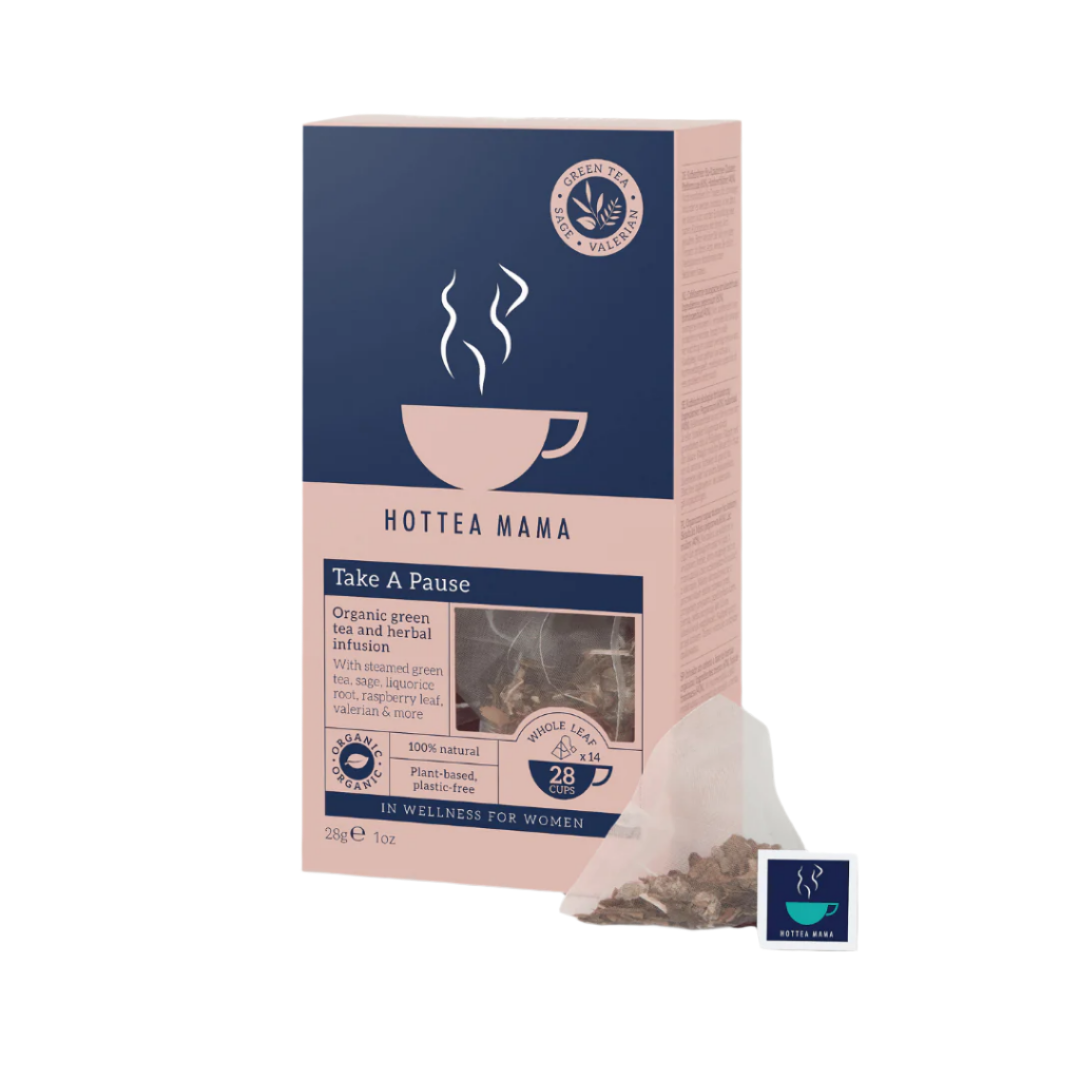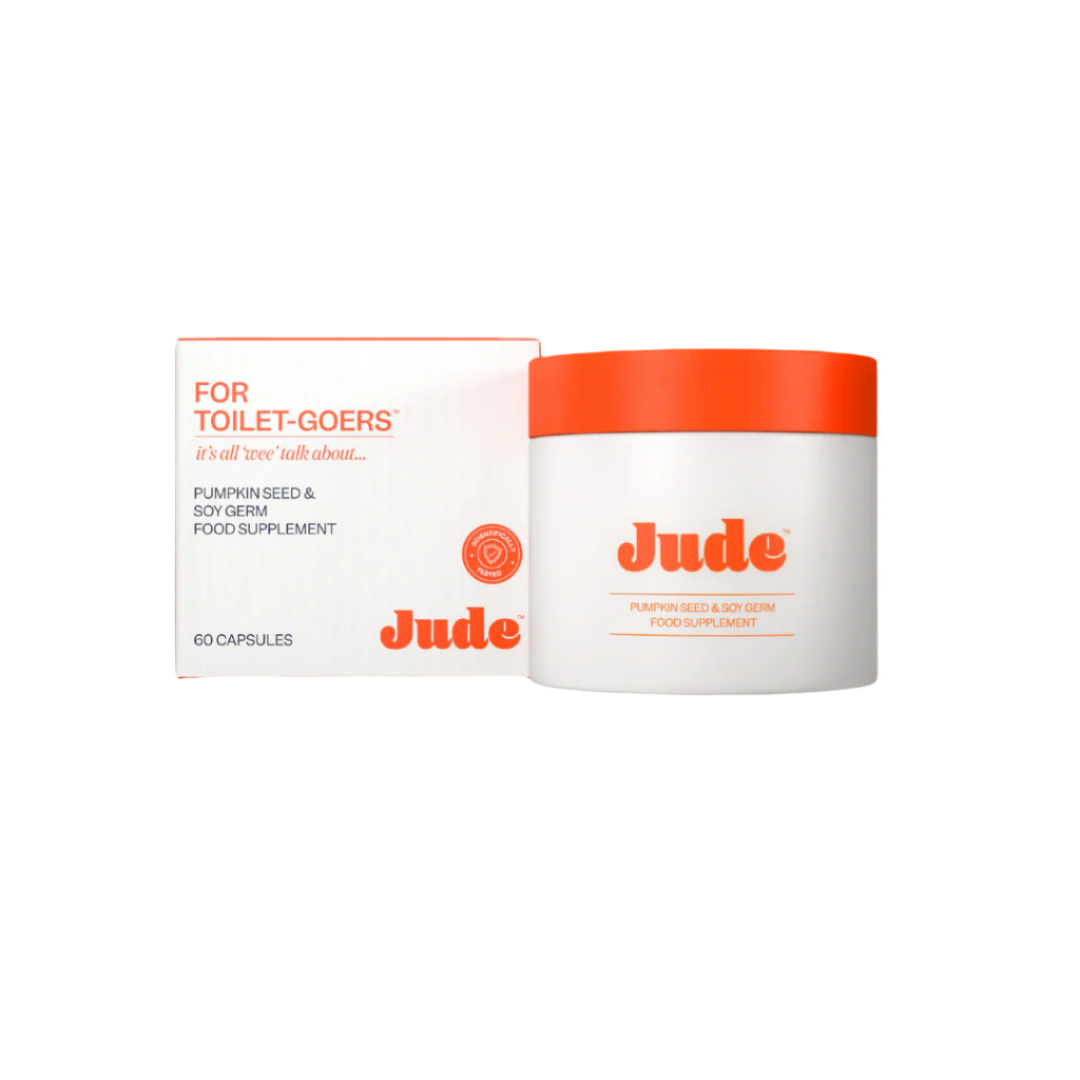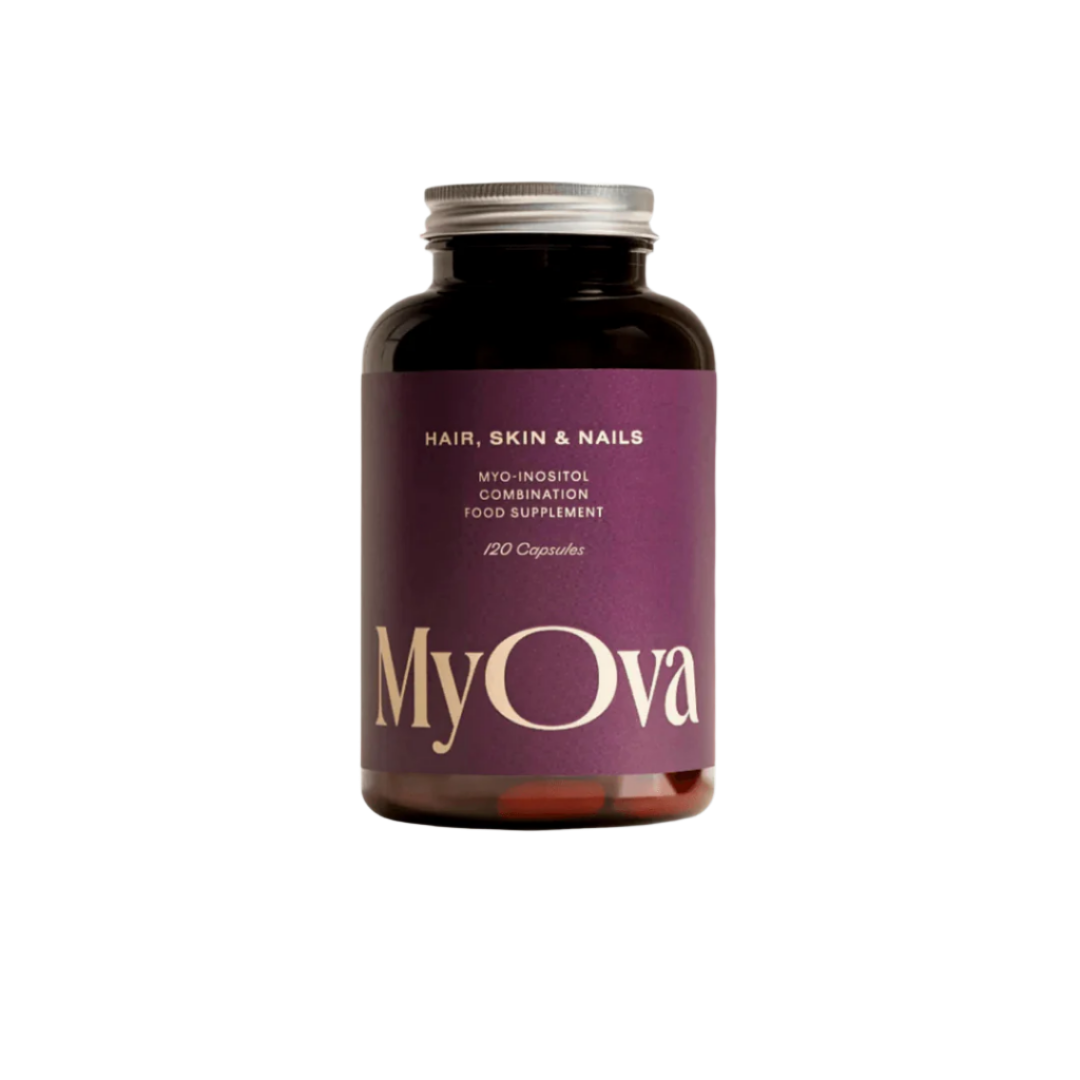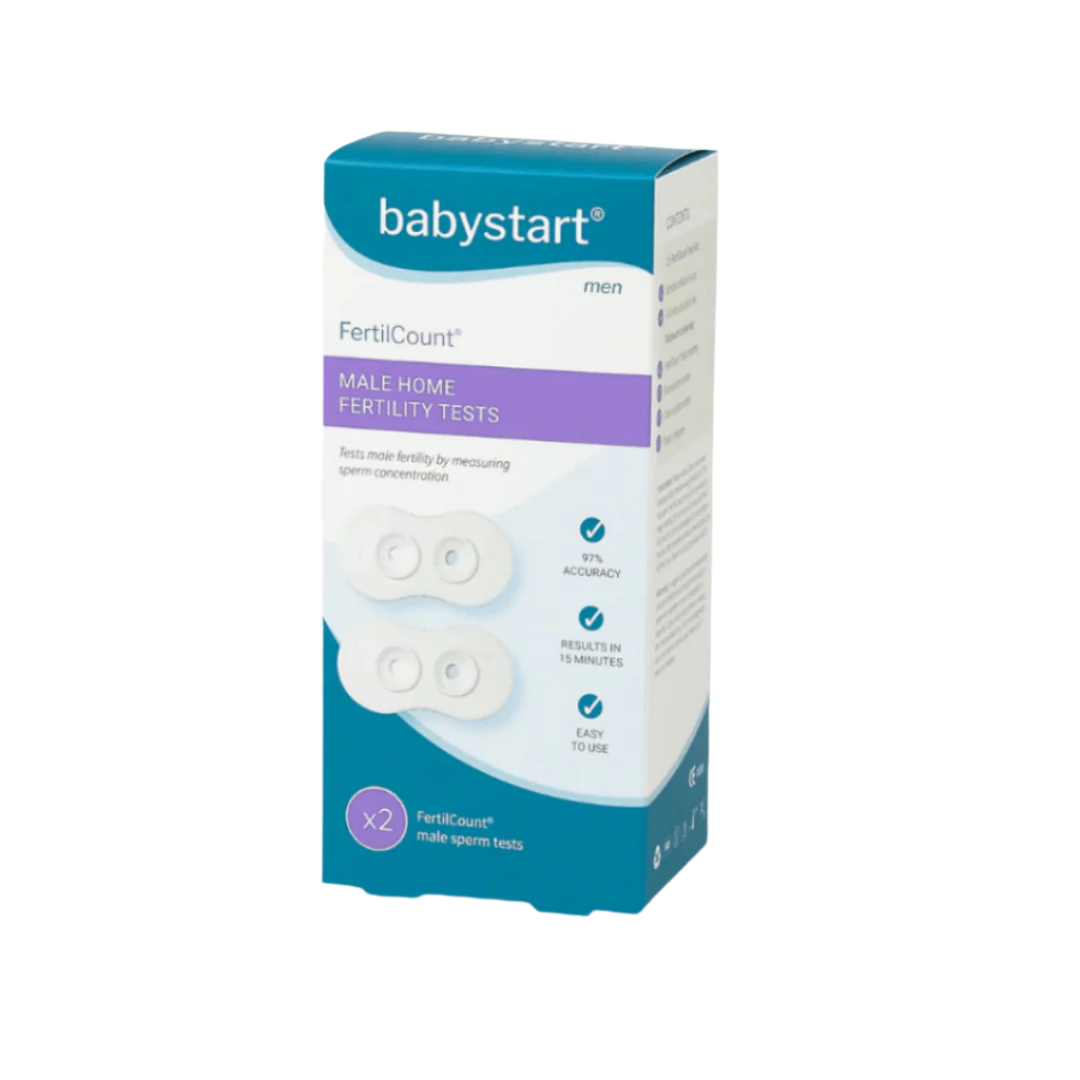The Journal
Natural Contraception Methods: Rethinking Our Choices on World Contraception Day
Contraception has always been about freedom, choice, and control. But as we celebrate World Contraception Day, it’s clear the conversation needs to evolve. For decades, women have shouldered the responsibility of birth control, often through hormonal methods that impact not just fertility, but mood, energy, and long-term health. Now, more women are asking: what about natural contraception methods? And why are we only just seeing alternatives for men? Let’s explore hormonal vs. natural contraception, the realities of the pill, why many are delaying or opting out of motherhood (and why that means we need a long-term solution), and what the future of contraception could look like. Hormonal Contraception: Effective but at What Cost? The most common methods of contraception in the UK remain hormonal: The Pill – taken daily, effective when used correctly, but linked to side effects including weight gain, mood swings, and reduced libido. The Coil (IUD/IUS) – highly effective, but can cause cramping, heavier or irregular bleeding, or hormonal side effects. The Implant, Patch, or Injection – convenient and long-lasting, but again, side effects vary and often include irregular cycles, acne, or hormonal imbalances. Hormonal contraception revolutionised women’s lives. But it also means taking artificial hormones for years - sometimes decades - without always being told the full story. In fact, the combined oral contraceptive pill has now been placed in the same risk category as certain cancers. Yet generations of women weren’t fully educated about those risks, leaving many to feel frustrated and misinformed. Not only that, but hormonal contraception can also have an impact on your brain and mood, here is what the science says: 1. Altered Mood, Anxiety & Depression RiskThere’s good evidence that starting or using hormonal contraceptives (especially combined pills, or ones with certain progestins) can increase the risk of mood changes, anxiety, or depressive symptoms — particularly in people already sensitive to hormonal shifts.For example, a large Danish study found users of hormonal contraception had a higher chance of depression requiring medical treatment. 2. Changed Brain Reactivity & ConnectivityNeuroimaging research shows that the pill can affect how different brain regions respond to emotional stimuli, stress, and fear: Some studies report lower amygdala reactivity to negative emotional images in pill users compared to non-users. There are also changes in connectivity across brain networks: one study tracking a single woman through her natural cycle and then on pill showed changes in ‘network modularity’ and typical connectivity patterns. 3. Stress & Inflammation Responses Hormonal contraceptive use seems to modify the stress response: both psychological (how you feel under stress) and biological (measures like inflammation markers, cortisol). Some research suggests users may have a more negative emotional response to stressors. 4. Emotion Recognition, Reward Processing & Fear ResponseOther brain functions appear to shift: How people recognise fear or negative emotions may differ. Some studies show changes in reward sensitivity (how much pleasure or motivation from positive stimuli) tied to hormonal status. Key Caveats & What Science Doesn’t (Yet) Say Effects are very individual. Some people feel fine; some feel noticeably different; others even feel positive mood changes. It depends a lot on personal hormone sensitivity, type of pill or progesterone used, prior mental health, lifestyle, etc. Many studies are short-term, have varying design quality, small sample sizes, or focus on specific formulations. That means generalising to “the pill causes X” for everyone is risky. Because hormonal contraceptives suppress natural cycles of oestradiol and progesterone, some brain functions that follow those cycles (emotion, stress response) are being flattened or altered. But how much this matters day-to-day is still under study. Natural Contraception Methods: Body Literacy and Hormone-Free For women who want to avoid synthetic hormones, natural contraception methods offer a different approach. These include: Fertility Awareness Method (FAM) – tracking basal body temperature (BBT), cervical mucus, and cycle length to predict fertile and infertile days. Cycle Tracking with Tech – devices like Tempdrop make BBT tracking easier, even with irregular cycles or disrupted sleep. Barrier Methods – condoms, diaphragms, and cervical caps, often combined with fertility awareness for extra protection. Withdrawal & Abstinence During Fertile Window – higher risk, but still part of the natural methods spectrum. ✨ While these methods require more education and consistency, they give women something hormonal methods don’t: body literacy. You learn how your body works, spot patterns, and connect symptoms with your hormonal phases. Why Some Women Are Saying “Not Now” or “Not Ever” to Children Beyond methods, there’s another shift happening: more women are choosing to delay having children, or not to have them at all. Reasons include: Cost of Living Crisis – raising children is expensive, and financial security is harder to achieve. Career & Independence – many women prioritise career growth, travel, or personal goals. Health & Environment – with rising awareness of climate change and personal wellbeing, some women are rethinking parenthood altogether. Contraception, in this context, isn’t just about preventing pregnancy - it’s about preserving choice in a world where the stakes feel higher than ever. And with this in mind, we need to find a long-term solution for women that is reliable, effective and risk-free. For us, this starts with education, we know that body literacy is risk-free in terms of the impact on our health, but if women are not education how to use natural methods effectively, it comes with human-error risks. It’s time we all got to know our body’s better. The Male Contraceptive Pill: Finally Sharing the Load? For decades, the burden of contraception has largely fallen on women. But a breakthrough could be on the horizon: the male contraceptive pill. Recent studies suggest safe, reversible hormonal pills for men may soon be available. This could rebalance responsibility and create a real cultural shift in how society views contraception. But the question remains: will men embrace it? And will women trust them to? Why Education Matters More Than Ever One of the biggest challenges is the lack of education. Too many women start the pill as teenagers without being told about alternatives, risks, or how their cycles actually work. World Contraception Day is about changing that. It’s about: Educating people on natural contraception methods alongside hormonal ones. Highlighting the risks and realities of the pill. Opening conversations about male contraception. Giving women the tools to make informed, empowered decisions. The Bottom Line Contraception is not one-size-fits-all. Hormonal methods remain effective and convenient for many, but natural contraception methods are rising in popularity for women seeking hormone-free, body-led choices. As more women delay or opt out of motherhood due to cost of living, health, or personal preference, contraception becomes less about just preventing pregnancy - and more about empowerment, education, and equality. This World Contraception Day, the real conversation is this:✨ What would contraception look like if it truly supported everyone’s health, choices, and futures?
Learn moreReflexology & Women’s Health: An Interview with Gaynor, a Clinical Reflexologist
At femme, we love exploring holistic approaches that support women’s health alongside traditional medicine. This month, we sat down with Gaynor, a clinical reflexologist based at the Juniper Clinic in Stockton, to talk about reflexology & women's health and the surprising ways this gentle therapy can support fertility and wellbeing. Q: For anyone new to reflexology, how would you explain what it is and how it works? Gaynor: Reflexology is a non-invasive, holistic treatment that’s usually carried out on the feet, though it can also be done on the hands, face, or upper legs. It works by stimulating reflex points on the feet that correspond to different organs and systems in the body. By applying pressure to these points, we aim to encourage balance — what we call homeostasis — and support the body’s natural ability to heal. Reflexology is essentially a form of therapeutic touch. Because our mental health and physiology are so closely linked, balancing one can have a positive effect on the other. Q: How can reflexology help couples trying to conceive? Gaynor: I’ve specialised in fertility reflexology for over 11 years, and while we can’t make guarantees, I’ve seen reflexology make a real difference for people struggling with conditions like PCOS, or they don't have regular cycles, or unexplained infertility. A lot of the time, couples who come to me have been trying to conceive for a long time, sometimes years and they come across reflexology often by recommendation and principally I just say to them, "I'm here to support you and to help you to relax." The main way reflexology helps is by encouraging relaxation. Because we know high cortisol and adrenaline levels can negatively impact reproductive health. By reducing stress, supporting deeper sleep, and calming the nervous system, reflexology can create a more supportive environment for ovulation, hormone balance, and overall fertility. At the very least, it helps people feel calmer and more in control. And yes - many clients have gone on to conceive. Q: Beyond fertility, what other health concerns do clients seek reflexology for? Gaynor: Quite a wide range. Some of the most common include: Migraines: By working the toe reflexes (linked to the head), I’ve seen clients with debilitating migraines experience significant relief. By working these reflexes we incorporate lymphatic drainage just to get things moving and shifting. Stress and anxiety: Reflexology can calm the amygdala (the part of the brain responsible for fight-or-flight responses), reducing the ripple effects stress has on digestion, immunity, and sleep. Menopause: Many clients come for support with hot flushes, mood changes, or sleep disruption. IBS and digestive issues: Stress often worsens gut symptoms, so by calming the nervous system, reflexology can help digestion too. It’s incredibly rewarding to see clients feel lighter, calmer, and more balanced after a session. I had one client who had really debilitating migraines to the point where they were not able to do what they love, she was retired and loved to go on walks, but she couldn't due to these debilitating migraines, and of course that has an impact on your mental health and wellbeing. So we started working together and she came back and said, "I just can't believe how different I feel.". Q: It must be so rewarding being able to help with so many area's of women's health. Do you get a lot of satisfaction from seeing the impacts of reflexology? Gaynor: Yes, especially with my area of expertise being fertility. It's all rewarding, but of course if I do get someone coming in who's been trying to conceive and they say, "I've for a positive pregnancy test" or "Here's a picture of my baby." or you know the baby has arrived safely, that's absolutely lovely to hear. Q: Is there research that supports reflexology, particularly in women’s health? Gaynor: There is research, though we need more. Some key studies include: 2021 study: Reflexology showed promising results in reducing premenstrual syndrome (PMS) symptoms. 2010 trial: Reflexology was found to be more effective than ibuprofen in reducing menstrual pain (dysmenorrhea), with effects lasting beyond treatment. 2002 trial: Reflexology was shown to ease menopausal symptoms. 2025 study: Reflexology improved sexual function in lactating women, which reflects its impact on regulating the nervous system and hormone balance. While more large-scale research is needed, these studies highlight the potential benefits in reproductive health, menstrual wellbeing, and beyond. Q: Can people try safe reflexology techniques at home? Gaynor: Absolutely! Reflexology is safe at all life stages - preconception, pregnancy, and postpartum. Anyone can give it a try. Start with a chart: Search online for a reflexology foot, hand, or ear chart. Work reflex points: Use your thumbs or fingers to gently press and massage points linked to areas of concern (for example, ovaries for reproductive health, toes for headaches, or ears for overall balance). Partner practice: Ask a partner to work on your feet or hands - it’s a lovely way to receive support. The key is consistency. Even small amounts of self-reflexology can promote relaxation and support your body’s natural rhythms. Q: What’s your favourite part of being a reflexologist? Gaynor: Honestly, it’s the transformation I see in clients. Whether it’s someone finally finding relief from migraines, or a couple conceiving after years of struggle, it’s incredibly rewarding. Every client’s story is different, but helping them find balance, calm, and renewed hope is what makes this work so special. Final Thoughts on Women's Health & Reflexology Reflexology is more than just a foot massage - it’s a holistic therapy that supports the body, mind, and emotions. Whether you’re navigating fertility challenges, hormonal changes, or everyday stress, reflexology can help bring your body back into balance. Gaynor Almond Gaynor Almond is an accredited Clinical reflexologist and Clinical Hypnotherapist, and registered with the CNHC (Complimentary and Natural Healthcare council). Gaynor is also part of the team at the Juniper Clinic in Stockton Heath. She has been practicing within the field of fertility for over 11 years, supporting individuals and couples dealing with the emotional impact of sub-fertility, secondary infertility, IVF, and miscarriage. Her focus has been on supporting individuals in their journey towards physical, mental, and emotional well-being, to make positive changes in their life to optimise their chances of carrying a healthy baby to term.
Learn moreNavigating Menopause Naturally: An Interview with Nutritional Therapist Julie Gough
Julie Gough shares expert tips for navigating menopause naturally. Improve hormone balance, manage symptoms, and feel your best through diet and lifestyle.
Learn moreWe Asked ChatGPT How to Manage PCOS Naturally — Here’s What It Said
Polycystic Ovary Syndrome (PCOS) affects millions of women and can cause irregular cycles, hormonal imbalance, fatigue, and challenges with fertility. Many people look for ways to manage PCOS naturally, and combining tracking with supplements is one of the most effective strategies. By using tools like Tempdrop and pairing them with myo-inositol PCOS supplements, you can better manage PCOS naturally while understanding how your body responds. This approach allows you to manage your symptoms without relying solely on medication, giving you insight into your cycles and overall hormonal health. With consistent tracking and support, it’s possible to manage PCOS naturally and see improvements in energy, mood, and cycle regularity. Why Should I Manage PCOS Naturally? Balance Your Hormones Safely – Support your body with supplements like myo-inositol and lifestyle changes without relying on medication. Boost Fertility & Cycle Regularity – Tempdrop helps track ovulation, while MyOva Balance supports hormone function for more predictable cycles, helping you to manage PCOS naturally. Increase Energy & Improve Mood – Stabilising your hormones and blood sugar can reduce fatigue and mood swings, allowing you to manage PCOS naturally without over-reliance on medication. Support Long-Term Health – Choosing to manage PCOS naturally can lower risks of insulin resistance, type 2 diabetes, and heart disease. Take Control of Your Health – With cycle tracking and targeted supplements, you gain insight into your body and make informed health decisions. But with so much advice online, many people are now turning to AI tools like ChatGPT to cut through the noise and get clear, evidence-based answers to support their approach. So, we decided to ask ChatGPT: “What helps to manage PCOS naturally?” Here’s what it said — and why it might be spot on. Track Your Cycle Accurately One of the biggest challenges with PCOS is irregular ovulation. ChatGPT recommended using a wearable basal body temperature tracker to understand when ovulation is happening, even if it’s unpredictable. “A wearable like Tempdrop can help by collecting accurate, overnight temperature data. This makes it easier to spot ovulation and understand your hormonal patterns.” — ChatGPT Tracking your cycle isn’t just about fertility. It also helps you see how lifestyle, stress, diet, and sleep affect your symptoms, giving you more control over your health. Support Hormone Balance with Myo-Inositol ChatGPT also highlighted myo-inositol as one of the most studied supplements for PCOS. “Myo-inositol can support insulin sensitivity, hormonal balance, and more regular cycles. Many people also notice improvements in mood and energy.” — ChatGPT We couldn’t agree more. Supplements like MyOva Balance contain myo-inositol and supporting nutrients designed to help manage PCOS naturally. Combine Both to Manage PCOS Naturally What stood out most was ChatGPT’s advice to combine cycle tracking with nutritional support: “Tracking plus supplementation is synergistic. You’ll not only support your body’s balance, but also see data showing whether it’s working.” — ChatGPT That’s exactly why we created the Tempdrop + MyOva Balance Bundle. It gives you: Insight: Tempdrop tracks your ovulation and cycle patterns. Support: MyOva Balance provides targeted nutrients for hormonal balance, energy, and mood. Together, they help you take manage PCOS naturally — with both the tools and the support your body needs. By combining cycle tracking with targeted PCOS supplements, you get a complete PCOS support bundle that addresses both symptom management and hormonal balance. Using Tempdrop alongside myo-inositol PCOS supplements helps you monitor your progress and manage PCOS naturally, giving you more control over your cycles, mood, and energy levels. Ready to Try it for Yourself? If you’re looking for a data-driven way to manage PCOS naturally, our Tempdrop + MyOva Balance Bundle is available now. See Product Want to Know More? Here's a deeper dive into the role of Myo-Inositol in Managing PCOS Symptoms Myo-inositol is a naturally occurring nutrient that plays a key role in helping your body respond to insulin. In women with PCOS, insulin doesn’t always work as efficiently, which can cause hormone imbalances, irregular cycles, and higher androgen levels. Taking myo-inositol can improve how your body processes insulin, helping to lower insulin levels and supporting more balanced hormone production. This can make ovulation more regular, support fertility, and even improve mood and energy. Because it works at a cellular level, myo-inositol doesn’t just help cycles — it also supports overall metabolic health, including blood sugar and cholesterol levels. Many women with PCOS find that combining myo-inositol with consistent cycle tracking gives them better insight into their body and a natural way to take control of their health.
Learn moreThe Complete Guide to BBT Tracking: Understanding Your Cycle Through Temperature
When it comes to understanding your cycle, your body speaks in signals. Some are obvious - like your period arriving each month - while others are more subtle but just as powerful. One of the most useful and accessible signals is your Basal Body Temperature (BBT). BBT tracking has been used for decades as a way to understand fertility, confirm ovulation, and uncover hormonal health patterns. Today, it’s easier than ever to incorporate into your daily routine thanks to smart thermometers and wearable tech. If you’ve ever wondered what BBT tracking really is, how it works, and what it can tell you about your body, this guide will cover it all. What Exactly Is BBT? BBT stands for Basal Body Temperature - your lowest body temperature in a 24-hour period. It’s usually reached during deep sleep when your body is most at rest. That’s why it’s called basal - your body at its baseline, without the fluctuations that come with movement, eating, or even stress. Tracking your BBT over time, you can see small but meaningful temperature shifts that reflect what’s happening hormonally throughout your menstrual cycle. When and How Should You Measure It? Technically, true BBT occurs during sleep. Traditionally, women used BBT thermometers to take their temperature first thing upon waking - before getting out of bed, moving around, or even drinking water. This provided a reasonably accurate reading of their basal temperature. However, this method can be tricky. One restless night, a late bedtime, travel, alcohol, or illness can all skew the reading. That’s why continuous overnight tracking with wearable devices is now considered more accurate - it measures your temperature while you’re actually asleep, not after you’ve woken up. Tips for accurate BBT tracking: Take your temperature at the same time every day (give or take an hour). Aim for at least 3 consecutive hours of sleep before measuring. Track consistently across your cycle, not just for a few days. Note external factors like stress, alcohol, or travel, which can affect results. Why Is BBT Tracking Important? BBT tracking isn’t just about numbers on a chart. It’s about what those numbers represent: hormonal changes. Here’s what consistent BBT tracking can reveal: 1. Ovulation Has Occurred After ovulation, progesterone levels rise. Progesterone is a heat-inducing hormone, which means your resting body temperature rises slightly - usually by 0.2–0.5°C (0.4–1.0°F). This confirms ovulation has already taken place, though it doesn’t predict it in advance. 2. Your Fertile Window By identifying your temperature shift each cycle, you can work backwards to pinpoint your fertile window. Fertility is highest in the five days leading up to ovulation and the day of ovulation itself. While BBT can’t predict ovulation, combining it with other fertility awareness methods (like cervical mucus tracking) gives a clearer picture. 3. Luteal Phase Health The luteal phase is the time between ovulation and your next period. BBT stays elevated throughout this phase. A healthy luteal phase usually lasts 10–16 days. If your luteal phase is consistently shorter, it may signal low progesterone or challenges with implantation. 4. Cycle Regularity & Patterns Over several months, BBT tracking can reveal irregular cycles, late ovulation, or even anovulatory cycles (when no ovulation occurs). These insights are helpful whether you’re trying to conceive or simply want to better understand your menstrual health. 5. Possible Early Sign of Pregnancy If your BBT stays elevated for 18 days or more after ovulation without your period arriving, it may be an early sign of pregnancy. While only a pregnancy test can confirm it, many women spot the first clue in their BBT charts. 6. Impact of Lifestyle Factors Tracking over time also shows how stress, illness, poor sleep, or even time zone changes affect your cycle. It’s a reminder that your body and hormones respond to the world around you. A Typical BBT Pattern Across the Cycle To understand BBT tracking, it helps to know what a “normal” pattern looks like: Menstrual Phase (Day 1–5) BBT: Low and stable (36.1–36.4°C / 97.0–97.7°F). Hormones: Oestrogen and progesterone are at their lowest. Follicular Phase (Before Ovulation) BBT: Remains in the lower range, with small fluctuations. Hormones: Dominated by oestrogen, preparing the body for ovulation. Ovulation (Mid-cycle) BBT: Often a slight dip just before ovulation. Then, a sharp rise (around 0.3–0.6°C) signals ovulation has occurred. Hormones: Triggered by a surge in luteinising hormone (LH) and rising progesterone. Luteal Phase (After Ovulation) BBT: Elevated and stable (36.5–36.9°C / 97.7–98.4°F). Hormones: Progesterone dominates, raising resting body temperature. End of Cycle If not pregnant: BBT drops sharply 1–2 days before your period. If pregnant: BBT stays high beyond 16+ days post-ovulation. On a chart: you’ll see a low range pre-ovulation, a clear thermal shift upward, and a higher range post-ovulation. That thermal shift is the key marker that ovulation occurred. Why Consistency in BBT Tracking Matters BBT tracking isn’t about perfection - one disrupted night or missed reading won’t ruin your chart. What matters is the pattern over time. Consistent tracking builds a map of your body’s natural rhythm. This can: Help you recognise your unique fertile signs. Provide valuable information to discuss with a healthcare professional. Empower you to sync your lifestyle with your cycle phases (workouts, nutrition, rest). Consistency is also key if you’re using BBT as part of the Fertility Awareness Method (FAM) for natural family planning. Who Can Benefit From BBT Tracking? Trying to conceive – BBT confirms ovulation and helps identify fertile windows. Avoiding pregnancy naturally – when combined with FAM, it can be a hormone-free method of contraception. Managing conditions like PCOS – BBT tracking can highlight irregular ovulation or anovulatory cycles. General cycle awareness – even if you’re not TTC, it’s a tool for understanding your health. The Bottom Line: BBT tracking is a simple and insightful way to better understand your cycle. By noticing small shifts in your temperature, you unlock a deeper awareness of your hormones, ovulation, and fertility health. Whether you’re trying to conceive, avoiding hormones, or simply connecting with your body, BBT tracking is one of the most empowering tools available. All it asks from you is a little consistency.
Learn morePCOS, Nutrition & Fertility with Kirsten Oddy
PCOS can feel overwhelming - but it doesn’t have to be. This month, we sat down with Kirsten Oddy, Women’s Health Nutritionist and PCOS specialist, to talk myths, fertility, food swaps, and the lifestyle habits that really make a difference. From busting the gluten-free/dairy-free myth to sharing practical nutrition tips and small, sustainable steps, Kirsten reminds us that it’s not about restriction, it’s about building habits that support your body, your cycle, and your fertility. What’s the biggest myth about food & PCOS? Probably one of the biggest myths I hear is that you need to go gluten- and dairy-free to manage PCOS. There’s no strong evidence this helps, and it can actually lead to unnecessary restriction and a tougher relationship with food - something women with PCOS are already more vulnerable to. It’s easy to look for one ‘super-food’ or a strict diet to “fix” PCOS, but the truth is it’s your overall approach to food and lifestyle that has the biggest impact over time to managing your symptoms. How can nutrition support fertility in women with PCOS? Nutrition can play a powerful role in supporting fertility with PCOS, either on its own or alongside medical treatment. While irregular periods and ovulation are the most common fertility challenges, PCOS can also affect egg quality, disrupt the vaginal microbiome, and even increase miscarriage risk - all of which can make trying to conceive more difficult. That’s why a multi-faceted approach to balancing blood sugar, reducing inflammation, and optimising nutrient status is so important. Trying to conceive with PCOS can feel overwhelming and isolating, but the good news is that your diet and lifestyle are areas you can take control of - and even small changes could make a big difference. What are some easy food swaps for everyday life? Swap white rice/pasta → quinoa, brown rice, or lentils Higher in fibre + protein, keeps you fuller for longer, and supports insulin sensitivity. Swap 1 portion of red meat → oily fish each week Less saturated fat, more anti-inflammatory omega-3s. Swap cereal/toast + jam at breakfast → Greek yoghurt, eggs, or a protein smoothie A protein-rich start balances blood sugar and reduces snacking later on. Swap your second coffee of the day → green tea Lower caffeine, rich in antioxidants + calming compounds like L-theanine, and has been shown to improve PCOS symptoms. Add 1 extra vegetable each day Not technically a swap, but more variety = more fibre + nutrients. Aim for ~8 portions of veggies daily. Even small swaps add up to a big difference over time! Beyond diet, what lifestyle habits really help? Lifestyle habits like sleep, stress management and movement, all work together with nutrition to support your overall wellbeing with PCOS. Getting good quality sleep is important. Just one night of disturbed sleep can increase your hunger and cravings the next day - something that’s already a struggle with PCOS! Exercise is also amazing for PCOS. Both cardio-based exercise and resistance-based movement have been shown to lower insulin and testosterone levels. The key is finding something you actually enjoy so it can become a regular part of your routine. If someone feels overwhelmed by a PCOS diagnosis, what’s the first positive step they can take today toward improving their fertility and wellbeing? It’s easy to get trapped in the mindset that you need to ‘fix’ everything at once. This can actually leave you feeling completely overwhelmed and you end up not doing anything instead! If you are feeling overwhelmed, I encourage you to just start by focusing on the one thing that feels achievable right now - that could be making one of the food swaps we mentioned earlier, or going for a 10 minute walk on your lunch break. It’s the small, consistent changes that really add up to make a big difference. Thank you Kirsten A big thank you to Kristen for talking to us this PCOS Awareness Month about PCOS, nutrition and fertility. We truly believe what Kristen says, 'small changes really can make a difference'. So what small change are you going to make today? You could make one of Kirsten's suggested food swaps, go for a walk at lunch time or something we're very passionate about, start cycle tracking. Cycle tracking gives you the insights you need to be able to understand your cycle better. Want to know more? Read our article, 'using cycle tracking to manage conditions like PCOS and endometriosis', here. Kirsten Oddy Kirsten Oddy is a Women’s Health Nutritionist specialising in PCOS and passionate about helping women feel their best. She helps women regulate cycles, improve fertility, and build nutrition and lifestyle habits that actually stick - without restrictive diets or overwhelm. A go-to expert in PCOS, Kirsten runs a busy online clinic with her team, providing personalised nutrition consultations, coaching packages, advanced health testing, and hands-on workshops to support women with PCOS in every aspect of their health and wellbeing.
Learn moreUsing Cycle Tracking to Manage Conditions like PCOS and Endometriosis
For many people, reproductive health conditions like polycystic ovary syndrome (PCOS) and endometriosis don’t just affect fertility—they impact daily life. From unpredictable cycles to painful symptoms, these conditions can feel like they’re running the show. That’s why using cycle tracking to manage conditions like PCOS and endometriosis is such a powerful tool. It’s not just about fertility awareness. It’s about gaining knowledge, spotting patterns, and having real data you can use to take back some control. And with Tempdrop, the process becomes simpler, more accurate, and more reliable than traditional methods. Why using cycle tracking to manage conditions like PCOS and endometriosis matters Both PCOS and endometriosis can make cycles irregular, painful, or difficult to understand. Doctors often say “keep a cycle diary” — but when your periods don’t follow a predictable pattern, that advice can feel frustrating. By using cycle tracking to manage conditions like PCOS and endometriosis , you get more than just a diary. You get: Insight into whether ovulation is happening Data on how long your cycles really are Patterns between hormone shifts and symptom flare-ups A clearer way to advocate for yourself with healthcare providers This kind of information can make all the difference in day-to-day management and long-term treatment plans. How Tempdrop Makes Cycle Tracking Easier Traditional basal body temperature (BBT) tracking requires you to wake up at the same time every morning, take your temperature, and log it. For people with disrupted sleep or unpredictable schedules, this is nearly impossible. Tempdrop changes the game. You wear it on your arm overnight, and it automatically records your temperature while you sleep. The app filters out “noise” from restless nights and gives you a reliable chart of your cycle. For anyone using cycle tracking to manage conditions like PCOS and endometriosis , this means: Less stress and fewer missed readings Accurate confirmation of ovulation (when it happens) Data you can actually trust, even with irregular cycles Managing PCOS with Cycle Tracking Polycystic ovary syndrome is one of the most common causes of irregular ovulation. Some cycles may be anovulatory, while others are delayed or unpredictable. This can make it hard to know when (or if) you’re fertile and to understand how your body is working. By using cycle tracking to manage conditions like PCOS and endometriosis , you can: Confirm whether ovulation is occurring in a given cycle Track how long your luteal phase lasts when ovulation happens Identify trends that might otherwise be invisible (like recurring long cycles) With Tempdrop, you don’t have to guess whether a bleed is a true period or just breakthrough bleeding. Temperature data helps you see whether ovulation actually occurred. That clarity is invaluable for anyone navigating PCOS. Managing Endometriosis with Cycle Tracking Endometriosis isn’t just about painful periods—it often brings fatigue, digestive issues, and inflammation that can flare at different points in the cycle. Without tracking, it can feel random and overwhelming. By using cycle tracking to manage conditions like PCOS and endometriosis , you can start connecting symptoms with hormonal phases. For example: Pain flares may intensify during the luteal phase Fatigue may peak around ovulation Digestive changes may line up with menstrual bleeding Tempdrop helps confirm where you are in your cycle, so you can connect your lived experience with real hormonal shifts. That awareness makes it easier to prepare, adjust routines, and advocate for better support. Turn Data into Advocacy Healthcare appointments for PCOS or endometriosis are often short, and it can be hard to explain the complexity of your symptoms in a 10-minute slot. By using cycle tracking to manage conditions like PCOS and endometriosis , you bring evidence. With Tempdrop data, you can show your doctor: How often ovulation is (or isn’t) happening Cycle lengths across several months Symptom patterns tied to hormonal changes This makes conversations more productive and can speed up diagnosis, treatment, or referrals. Emotional Benefits of Tracking Living with PCOS or endometriosis can feel unpredictable and sometimes isolating. One of the overlooked benefits of using cycle tracking to manage conditions like PCOS and endometriosis is the emotional reassurance it provides. Instead of feeling like your body is working against you, you begin to see patterns and explanations. That knowledge doesn’t erase the challenges, but it can reduce anxiety and increase confidence. With Tempdrop, the process feels less like a chore and more like a supportive routine. Practical Tips for Getting Started If you’re considering using cycle tracking to manage conditions like PCOS and endometriosis, here are some tips: Be consistent – Wear your Tempdrop every night for the best results. Log symptoms – Use the app notes to connect physical changes with cycle phases. Be patient – Irregular cycles may take months to reveal useful patterns. Combine tools – Track cervical mucus, bleeding, and lifestyle factors alongside Tempdrop data. Share results – Bring your charts to appointments to strengthen conversations with healthcare professionals. Clarity and Care for PCOS Awareness Month This PCOS Awareness Month, we’re bringing together two ways to support your body: cycle tracking that reveals your rhythm and nourishment that works from within. By combining Tempdrop and MyOva, we hope to offer both clarity and care - add both Tempdrop and the myOva supplement of your choice to your basket, head to the checkout and 20% off will be applied. See Product The Bottom Line Conditions like PCOS and endometriosis can make cycles feel like a mystery. But by using cycle tracking to manage conditions like PCOS and endometriosis , you gain insight, clarity, and confidence. With Tempdrop, the process becomes easier and more reliable, even if your cycles are irregular or symptoms unpredictable. It’s not just about fertility—it’s about understanding your body, improving communication with doctors, and making empowered decisions about your health. Because when it comes to chronic conditions, knowledge really is power—and Tempdrop helps put that power back in your hands. Laura Cartwright Laura Cartwright is one of the founders of femme health. Having worked in the diagnostics industry for over 15 years, Laura is passionate about improving women's health, to create an equitable and forward-thinking landscape which proactively supports health outcomes. Learn more
Learn moreTracking Your Cycle During Perimenopause with Tempdrop
Perimenopause is often described as the “in-between” stage: not quite menopause, but not your usual monthly rhythm either. Hormones fluctuate, cycles become less predictable, and symptoms can feel confusing. For many women, this stage starts in their 40s, but it can arrive earlier. The challenge is that while your body is changing, it’s not always easy to make sense of what’s happening. This is where tracking your cycle during perimenopause becomes incredibly useful. Instead of relying on guesswork, you can gather real insights into how your body is shifting. And with the help of Tempdrop, you can make sense of irregular cycles, spot ovulation when it still happens, and feel more in control of this life transition. Why Tracking your Cycle During Perimenopause Matters Perimenopause isn’t a straight line. One month you might ovulate as usual, and the next your period may be late, early, or missing altogether. For some, hot flushes, mood changes, and sleep problems appear long before cycles stop completely. By tracking your cycle during perimenopause , you get answers to important questions like: Am I still ovulating? How long are my cycles now? Are my symptoms connected to hormone changes? Is there a pattern to the unpredictability? This isn’t just about fertility—it’s about knowledge. The better you understand your changing cycle, the easier it is to make informed choices about your health, wellbeing, and daily life. How Tempdrop Supports Tracking your Cycle During Perimenopause Traditional basal body temperature (BBT) tracking can be difficult at this stage of life. Waking up at the same time every day to take your temperature is tough enough without night sweats, disturbed sleep, or busy mornings. Tempdrop offers a more practical solution. You wear it on your arm overnight, and it automatically records your temperature while you sleep. The app smooths out any irregularities caused by restlessness or inconsistent sleep schedules, giving you reliable data without extra effort. For women who are tracking your cycle during perimenopause , Tempdrop can highlight: Whether ovulation is still occurring in some cycles How long the luteal phase lasts Shifts in cycle length over time Connections between symptoms and hormonal changes Spotting Ovulation When Cycles are Irregular One of the most confusing parts of perimenopause is not knowing if or when ovulation is happening. Some cycles are anovulatory (meaning no egg is released), while others are normal. By tracking your cycle during perimenopause with Tempdrop, you can see the subtle rise in temperature that signals ovulation. This gives you clarity—whether you’re curious about fertility, wondering if contraception is still necessary, or just wanting to understand what your hormones are doing. Even when ovulation becomes less frequent, knowing when it does occur helps you make sense of your symptoms and plan around your cycle more effectively. Connecting Symptoms to Hormone Changes Many perimenopausal symptoms—such as mood swings, anxiety, hot flushes, or fatigue—are linked to fluctuating hormones. But when those symptoms appear randomly, it can feel unsettling. By tracking your cycle during perimenopause , you can start to connect the dots. Maybe night sweats are worse in the luteal phase, or mood changes peak just before your period. Tempdrop provides objective data, so you’re not left wondering whether these experiences are random or hormone-driven. This knowledge can also be incredibly helpful if you decide to speak with a healthcare professional. Bringing cycle data and symptom patterns to an appointment makes it easier to have a productive conversation about treatment options, whether that’s HRT, lifestyle changes, or other support. Emotional Reassurance in a Time of Change Perimenopause can feel like losing control over your own body. Cycles that were once predictable may now come with uncertainty, and the physical changes can affect confidence and self-esteem. Tracking your cycle during perimenopause doesn’t fix everything, but it can help you feel grounded. Instead of being blindsided by irregular periods or unpredictable moods, you’ll have a clearer sense of what’s happening and why. For many women, that reassurance is powerful. It shifts the perspective from “my body is failing me” to “my body is changing, and I understand how.” Practical Tips for Tracking your Cycle During Perimenopause If you’re ready to start tracking your cycle during perimenopause with Tempdrop, here are a few simple tips: Be consistent – Wear your Tempdrop nightly for the most accurate picture. Log symptoms – Use the notes feature to connect temperature data with real-life experiences like sleep changes or mood shifts. Combine signs – Cervical mucus and cycle length still matter, even in perimenopause. Together with Tempdrop, they give a fuller picture. Be patient – Patterns may take time to emerge, especially if cycles are irregular. Share your data – If you talk to your GP or a menopause specialist, Tempdrop charts can make the conversation easier. The Bigger Picture While fertility may no longer be your focus, tracking your cycle during perimenopause is still an empowering practice. It helps you recognise the changes your body is going through, anticipate symptoms, and approach this transition with knowledge rather than uncertainty. Tempdrop makes this process simple, even when sleep and schedules aren’t. It’s less about perfect data and more about giving yourself insight, compassion, and confidence during a stage of life that can otherwise feel overwhelming. The Bottom Line Perimenopause is unpredictable, but it doesn’t have to leave you in the dark. By tracking your cycle during perimenopause with Tempdrop, you can understand what’s happening in your body, connect symptoms to hormonal shifts, and navigate this stage with more clarity. This isn’t about controlling perimenopause—it’s about making peace with it. And having tools that support you, rather than add stress, can make all the difference. Laura Cartwright Laura Cartwright is one of the founders of femme health. Having worked in the diagnostics industry for over 15 years, Laura is passionate about improving women's health, to create an equitable and forward-thinking landscape which proactively supports health outcomes. Learn more
Learn moreUsing Tempdrop When You’re Trying to Conceive
When you’re trying to conceive , you expect it to take a few months. But when those months stretch into a year—or even longer—it can feel like a mix of frustration, self-doubt, and endless questions. In the UK, you usually need to wait two years before being referred for fertility investigations if you’re under 35. That’s a long time to feel in the dark about what’s happening in your body. This is where cycle tracking tools like Tempdrop come in. They don’t promise instant results or magic fixes, but they give you something equally important: clarity. By helping you confirm ovulation, understand your cycle, and recognise your fertile window, Tempdrop can make the difficult process of trying to conceive a little less overwhelming. Why cycle tracking matters when you're trying to conceive Most people are told the basics: have unprotected sex regularly when you're trying to conceive and you’ll get pregnant within a year. For many, that’s true. But when it doesn’t happen, it’s natural to start wondering: Am I ovulating? Are my cycles regular? Is there something I’m missing? That’s why cycle tracking is so valuable when you’re trying to conceive. It doesn’t just help you know when to have sex; it also gives you reassurance that your body is doing what it’s supposed to do, or early clues if it’s not. With a tool like Tempdrop, you can: Confirm that ovulation is happening each month Identify your actual fertile window (not just the textbook version) Notice irregularities that might be worth mentioning to your doctor later Feel more in control during the waiting period The Challenge of the Two-Year Wait In the UK, if you’re under 35, you’re usually advised to keep trying to conceive naturally for two years before getting a referral for fertility testing. For those over 35, the timeframe is shorter (usually 12 months). But either way, it can feel like a long time to wait when month after month goes by without a positive test. During this time, cycle tracking with Tempdrop can give you peace of mind. You’ll know whether ovulation is happening regularly, and if it’s not, you’ll have reliable data to bring to your GP sooner rather than later. Even if everything looks normal, Tempdrop offers reassurance when you're trying to conceive: you’re not “missing” your fertile days, and you’re giving yourself the best chance possible. How Tempdrop Works for People Trying to Conceive Traditional basal body temperature (BBT) tracking can be tricky when you're trying to conceive. You’re supposed to take your temperature every morning at the same time, before getting out of bed, and log it manually. That’s tough if you’re working shifts, travelling, or just want a lie-in. Tempdrop makes it easier. You wear it on your arm overnight, and it automatically records your temperature while you sleep. The app smooths out any variations caused by restless nights or inconsistent wake-up times, giving you a clear chart of your cycle. For people trying to conceive , that means: No stressful morning routines Reliable confirmation of ovulation A bigger, clearer picture of how your cycles are working Tracking Ovulation with Tempdrop When Trying to Conceive When ovulation occurs, progesterone rises and your body temperature shifts slightly. Tempdrop picks up this change, showing you whether ovulation happened and when. This is crucial when you’re trying to conceive , because it confirms whether you’ve actually had a fertile cycle. Over time, you’ll start to see patterns: How long your luteal phase (time between ovulation and your next period) lasts Whether your cycles are consistent or irregular Which days of the month you’re most fertile This kind of knowledge can make all the difference in how you approach trying to conceive . What if You're Not Ovulating Regularly One of the most stressful parts of trying to conceive is not knowing whether there’s a problem. With Tempdrop , you can spot if ovulation isn’t happening regularly—or at all. That doesn’t mean you won’t get pregnant naturally, but it’s useful information for your own peace of mind. And if you do eventually reach the point where you’re referred for fertility support, having months (or years) of tracked cycles can help your doctor understand your situation faster. Instead of starting from scratch, you’ll already have valuable data to share. Emotional Support while Trying to Conceive Let’s be honest: the emotional side of trying to conceive is often harder than the physical side. Each month can feel like a cycle of hope, disappointment, and pressure. Having tools like Tempdrop doesn’t erase those feelings, but it can give you back a sense of agency. By knowing what your body is doing, you avoid the endless “what ifs.” You can feel confident that you’re identifying your fertile window accurately, even if it takes time to see that positive test. Practical Tips for using Tempdrop While Trying to Conceive Be consistent – Wear your Tempdrop every night for the most reliable data. Track other signs too – Cervical mucus and cycle length are useful alongside your temperature data. Be patient – It may take a few months of data before patterns emerge. Share your charts if needed – If you eventually see a doctor, your Tempdrop records can provide a helpful starting point. The Bottom Line If you’re in the early months of trying to conceive —or even if you’re approaching the two-year wait for fertility support—using a tool like Tempdrop can help you feel less powerless. It won’t guarantee pregnancy, but it will give you the knowledge, reassurance, and confidence that you’re doing everything you can during this chapter. And sometimes, that clarity is exactly what you need to keep going. Because when it comes to fertility, knowledge really is power—and Tempdrop gives you exactly that. Laura Cartwright Laura Cartwright is one of the founders of femme health. Having worked in the diagnostics industry for over 15 years, Laura is passionate about improving women's health, to create an equitable and forward-thinking landscape which proactively supports health outcomes. Learn more
Learn more
In The Press
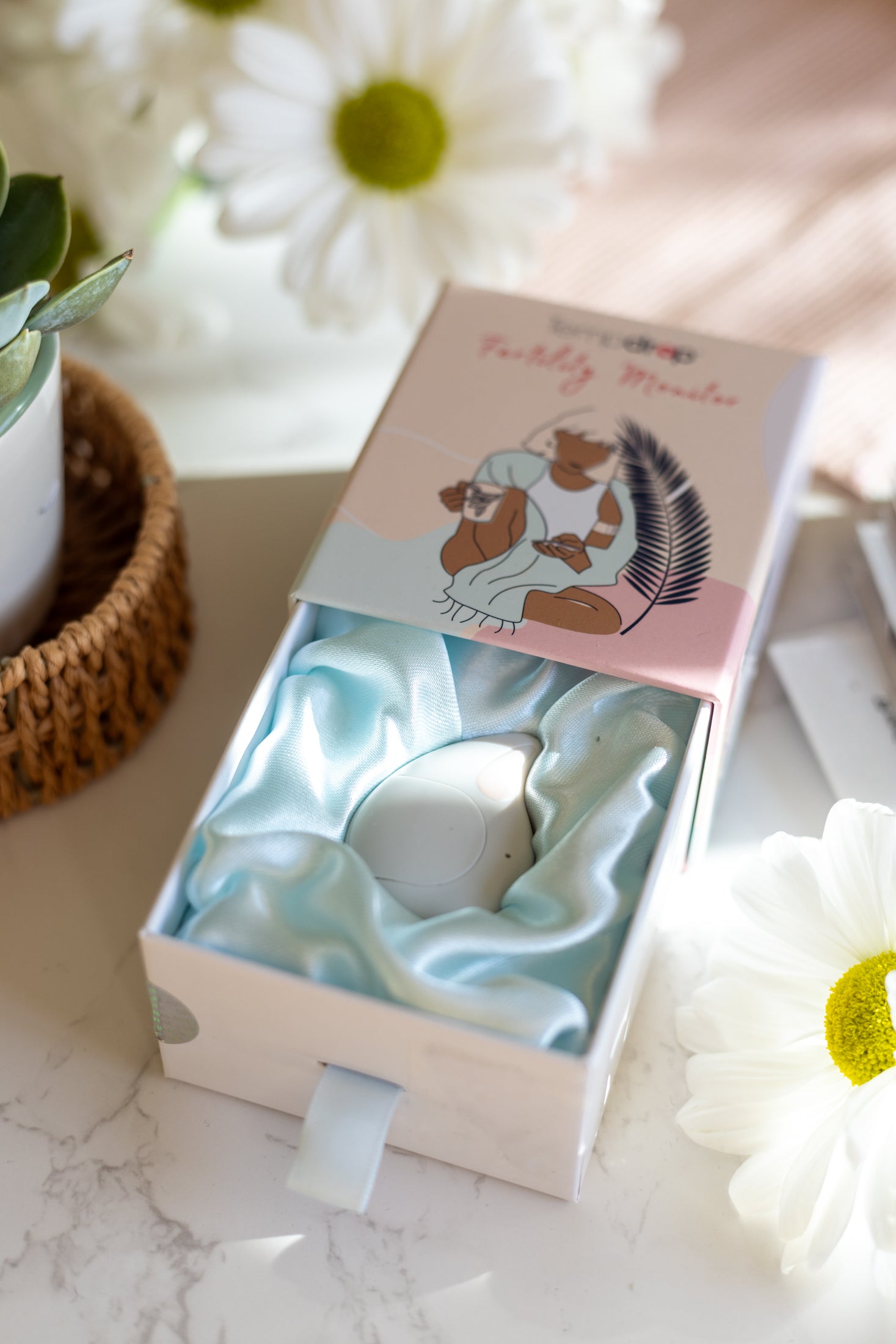
Simplify Your Fertility Tracking with Tempdrop
Take the guesswork out of cycle tracking with Tempdrop, the smart wearable thermometer that fits seamlessly into your routine. Designed to learn your unique patterns, it provides accurate, reliable insights without the hassle of early wake-ups or daily charts.















